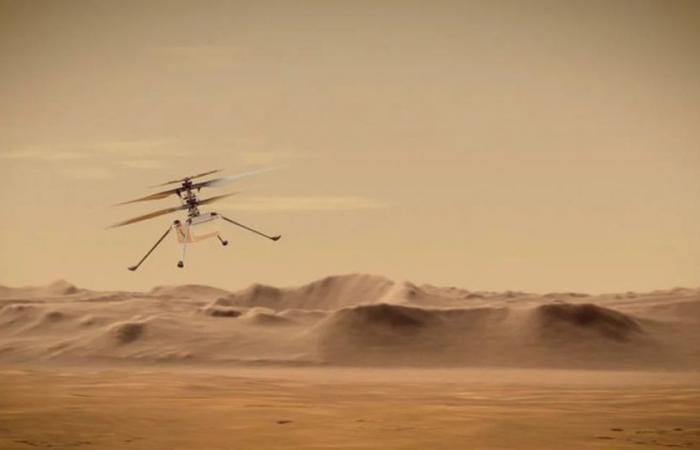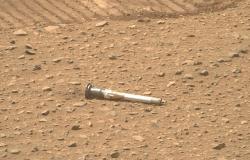When it comes to habitability, the Land It is the most common within the Solar System. Gentle temperature changes, a magnetic radiation shield, and an abundance of fresh water make our terrestrial existence easy, at least compared to Mars. With an atmosphere that is only 1% as dense as that of Land and without a magnetic field to speak of, the Red Planet is so far uninhabitable. But there are some areas that might be a little friendlier than others.
A mysterious hole on Marscaptured in an image by the Mars Reconnaissance Orbiter (MRO) of the POThas aroused the interest of the scientific community. This formation, located on the slopes of the Arsia Mons volcano, could lead to immense underground lava tubesaccording to the recent publication of the POT.
The image, taken on August 15, 2022 by the MRO’s High Resolution Imaging Science Experiment (HiRISE) camera, reveals a hole in the Martian soil just a few meters in diameter, located in the Tharsis Montes region. This region is known for its ancient volcanism and is home to some of the largest volcanoes on the planet.
Nicknamed “the little hole”, this pit is only a few meters wide. It is located in the immense shadow of Arsia Monsa colossal shield volcano that spans almost 434 kilometers in diameter and reaches a height that extends to just over 19 kilometers.
The possible existence of underground lava tubes offers multiple benefitss, as protection against radiation and extreme temperature changes in Mars. Two crucial factors, since the Red Planet has an atmosphere that is only 1% of the Earth’s density and lacks a significant magnetic field.
Furthermore, these tubes could be vital in the search for microbial life on Mars. The protection they offer could create a more stable and habitable environment, not only for microorganisms, but also for future human bases.
Although the POT knows little about these tubes wash Martians, similar structures found in the Moon indicate that These places could be ideal for human habitation.
In 2009, the Lunar Reconnaissance Orbiter (LRO) found similar holes on the surface of the Moonand a 2022 study found that they maintain a constant temperature of around 17 degrees Celsius, a pretty good number, considering the Moon’s temperature swings are as wild as those found on Mars.
“Humans evolved living in caves, and we could return to caves when we live on the Moon,” said David Paige at the time, co-author of the paper who made these initial temperature measurements. The same could apply to Mars.
On Earth, similar formations are found in volcanoes such as those in hawaii. There, these pits, known as craters, They do not connect to long caves or lava tubesbut are the result of deep collapses in the terrain.
As for the hole in Arsia Monsit is still unclear whether it leads to a deeper underground structure or is a shallow formation, similar to volcanic craters in hawaii. However, the great volcanic activity in the region suggests the possibility of finding these structures somewhere on the planet.






